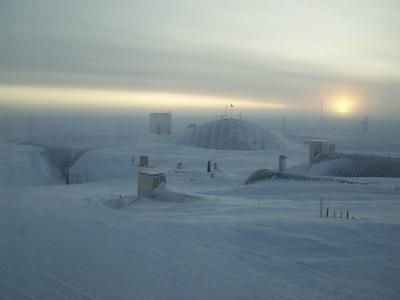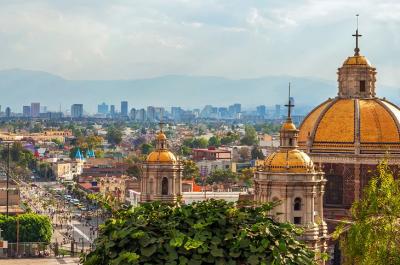Welcome to India
Adventure enthusiasts seeking the ideal location for diving, whitewater rafting, caving, mountaineering or trekking have to look no further than India. However, it is essential to take out comprehensive insurance cover before starting out on your extreme sports vacation.
Diving and Snorkelling
The coastal waters in India tend to be too murky for any quality snorkeling and diving due to the high silt content from the dozens of rivers that run into the ocean. Despite the less than ideal visibility, however, there tends to be a plethora or coral reefs and rainbow-bright fish to make up for it. In addition, the subcontinent also has two magnificent archipelagos of tropical islands, that are encircled by crystalline waters. With diving centres that are equipped with excellent supplies and reputations to match, you’ll easily find quality diving in the Andaman Islands and Lakshadweep that is equal to first-class diving facilities elsewhere in Asia. As such, the prices are rather high, when compared to similar schools in Thailand. A one-tank excursion typically runs at $60-70 while an open-water course will set you back $400-450.
The best destination for independent travelers that are looking to go snorkeling or scuba-diving is the Bay of Bengal’s Andaman Islands, which is approximately 1,000km east of India’s mainland. This particular archipelago is rather isolated and forms part of the underwater mountains that reach from the coast of Myanmar south to Sumatra. With enormous coral reefs surrounding the island, the crystalline waters are abundant with marine life. Most tourists choose snorkeling over diving because diving courses are expensive here. PADI-certified divers should consider renting equipment from one of the capital’s two diving schools. It’s well worth the cost to join trips to dive places offshore like those in the Mahatma Gandhi Marine Reserve or Cinque Island. Open-water courses have fewer options available – especially between December and February when it’s a peak season – so advance booking is essential.
In the Arabian Sea, 400km west of Kerala, is the atoll Lakshadweep. Covered in tropical coconut palms, the atoll is surrounded by numerous coral reefs in shallow lagoons with fantastic visibility; it’s ideal for amateurs and experienced divers, but accommodation is limited to one, expensive, five-star hotel.
There are a few resorts in Goa, such as Palolem, from which dive schools that are PADI-approved operate. Most of the schools take their clients south to the more ideal shores of nearby Karnataka since the waters of Goa do not have good visibility for diving.
Like anywhere else, you must bring your logbook and/or certification card with you if you are a qualified diver. If you haven’t been diving in 365 days or more, you will need to take a short test at a cost of approximately Rs350 or US$8.
Whitewater Rafting
While the rivers of Chenab and Beas in Himachal Pradesh, the Rangit and Teesta in Sikkim, the Zanskar and Indus in Ladakh, and the Ganges in Uttarakhand may not be as well-known as many of those in Nepal, the scenery and quality of the waters are still highly recommended. The dominant centres for rafting are located in Gangtok, Kullu, Leh, Manali and Rishikesh where average prices, including meals, start from Rs750 (approximately US$16). However, it’s always worthwhile to compare options and prices in order to get the best deal for your rafting experience.
Caving
For top-notch caving, Meghalaya should be the top of your list. Within this Indian state, check out the Jainta Hills, one of the longest system at 21.4km (Krem Kotsati-Umlawan Cave), the East Khasi Hills and the South Garo Hills.
Mountaineering
If you’re planning to go mountaineering in India, be sure to plan and organize your trip thoroughly and in advance as this is a serious venture in India. The Himalayas is not for novice mountaineers, so it’s better to start at a training course – such as those offered in Darjeeling, Uttarkashi and Dharamsala – if you’re not an experienced mountaineer. Most tourists prefer the one at Uttarkashi in Uttarakhand as it offers training in ice- and rock-climbing in addition to techniques for expeditions – all at a fraction of the costs most mountaineers would encounter in western countries. However, be warned: the basic mountaineering course is 28-days and is run by Siachen Glacier army veterans from India, that makes it a grueling course to undertake.
Depending on the height, fees for the peaks run from US$1,500 to US$4,000. An IMF liaison officer must accompany every expedition; lists of local climbing clubs are available from the IMF and it’s a good idea to join such clubs, which can get permits to climb peaks that may otherwise be restricted for you.
Skiing
Skiing is not a sport that has been developed in India despite the expanse of the Himalayas. It is only possible to participate in organized ski trips in the western region of the Himalays – especially Himachal Pradesh, Uttarakhand and Kashmir.
Auli, which is a ski area in Uttarakhand, offers cheap skiing, but the season is very short and the options are limited despite the money that has been invested for skiing. In addition, there are almost no activities after skiing. Similarly, the options in Shimla, Himachal Pradesh, are not sufficiently developed to justify the extensive detour required to get there. However, it’s Kashmir’s Gulmarg that offers the best opportunities with a plateau of 2,600m and some of the best powder snow available in the country. The site is a former British hill station and offers the world’s highest ski lift with world class facilities for off-piste skiing without the life queues and crowds you find in the Alps.
Trekking
Although Nepal tends to be more commercial than India when it comes to trekking, there are many breathtaking routes – especially in the Ladakh and Zanskar Himalays - with mountain passes that regularly exceed 5,000m. Not all Himlayan routes are for experienced trekkers. There are some fairly short trails through the Singalila Ridge around Darjeeling as well as Garhwal’s popular pilgrim trails and Sikkim’s low-level walks through forests and hillsides covered in rhododendrons. The sport is also gaining popularity in Nilgiris in the south and Western Ghats.
It’s always a good idea to hire a guide/cook to accompany you on your route – particularly in the places with less traffic where there is always a genuine risk of having insufficient supplies or getting lost. You can also hire a porter (with a pony if you prefer) to make you travels less strenuous; this is essential if you are planning to take a longer trek or have a lot of provisions to take with you. Most of the time, men in nearby towns and villages will eagerly approach you for such work, but be prepared to haggle because there isn’t a set daily rate. Trekking companies can also organize a trek for you if you feel somewhat overwhelmed doing it yourself.
If you’re looking for an easy state in which to organize a trek, look to Himachal Pradesh. Because there are fewer visitors to Uttarkhand, it’s still possible to explore lesser chartered territory while avoiding the masses of pilgrims or joining them as they make their way to Badrinath, Gangotri, Joshimath and Kedarnath, which are all sacred sites. Other equally magnificent and exhilirating treks are available Ladakh and Zanskar, that are ancient kingdoms of Buddhism, where you can choose a trail as short as four days to expeditions of 10 days or longer. Darjeeling, in the east of the Himalayas, is a great place to base yourself if you’re looking to explore the mountains around the area. For a variety of altitudes, head to nearby Sikkim, which has the world’s third highest massif and dips to river valleys. For the less arduous treks, the Ghats and Nilgiri Hills in the south of the subcontinent, Munnar and Wayanad in Kerala, Ooty in Tamil Nadu, and Kamatak’s Kodagu region are all good options.
As with any sport, it’s essential to have the correct equipment, but don’t mistake this for the need for hi-tech gear. Remember that you will have to carry what you bring, so keep it to the essentials. In Leh and Darjeeling, it’s possible to rent equipment, but you’ll have to bring your own elsewhere. Ensure that everything is in proper working order before you begin your trek. For clothing, keep it light and versatile to allow for the fluctuating temperatures; it’s a good idea to layer your clothing for the best results.
Camel Trekking
Camels are the best way to travel in the desert in comfort and style. The dromedary (one-humped Arabian camel) has adapted to the desert areas of Rajasthan where it is common. Its double eyelashes and wide, padded feet are made for desert sands. A camel ride is a smoother one than a horse because of the way its legs move – i.e. left then right rather than front then back. Most camels are sweet and soft-tempered unless it’s spring when the males are more likely to kick, spit and can be very grumpy.
You can organize a camel trek in both Jaisalmer and Bikaner. You have the option of doing a camel trek through the most popular tourist locations or around the less known areas. There are also specialized treks that can take you to isolated regions in the desert. Most treks are two days of riding and one night of desert camping; however, the length of the trips is negotiable.






